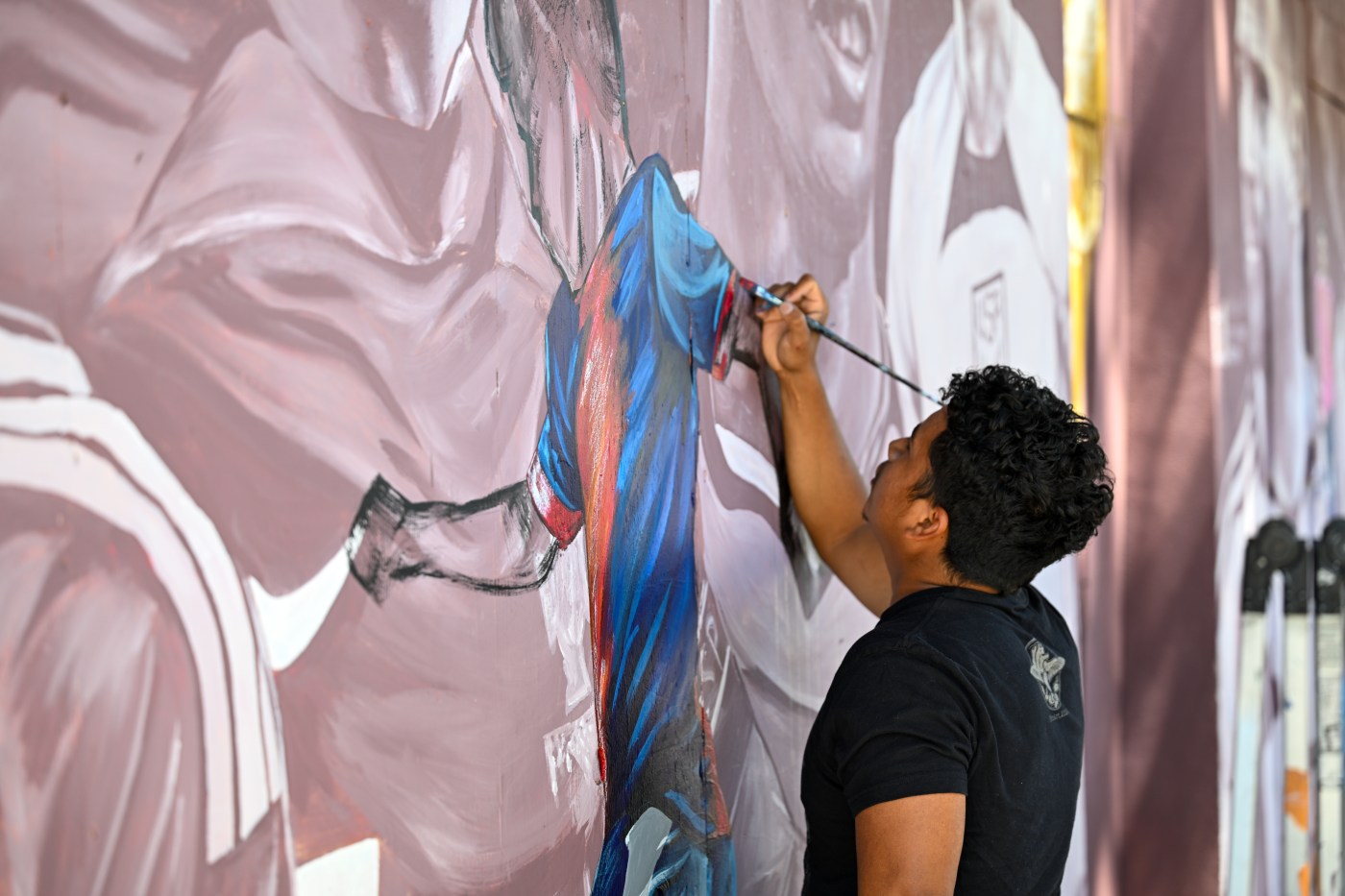
Across a stretch of Santa Clara Street spanning from San Jose City Hall to San Pedro Square, new signage, fresh coats of paint, power-washed sidewalks and a slew of public art projects stand out.
Related Articles
Foreclosed San Jose office building finds buyer at discount
California ranks No. 1 for unemployment. Again.
Electric vehicle sales in California sputter
The vast majority of US adults are stressed about grocery costs, a poll finds
California consumer confidence rises slightly in July
For city officials and businesses owners, these efforts to spruce up downtown represent more than just improvements. They view the completion of the Santa Clara corridor beautification initiative as the beginning of a broader plan of “stitching districts” to create a more vibrant and cohesive downtown. And, not only for the marquee sporting events like the Super Bowl, March Madness and FIFA World Cup heading to Silicon Valley in 2026 but as part of the grander long-term vision to transform the area.
“This effort is really about restoring pride in our downtown, something we’ve been talking a lot about in recent years,” San Jose Mayor Matt Mahan said. “It’s been a great pleasure to work with the Santa Clara Street business and property owners, who not only take pride in what they do to put their livelihoods on the line because they believe in the future of downtown San Jose. “
San Jose Downtown Association interim CEO Gumby Marques called the beautification project “phase 1.0” of the larger vision. He said the $795,000 Santa Clara Street initiative, which the city, the downtown property-based improvement district and corporate sponsors collectively funded, included 17 different projects, including a new soccer mural and “Welcome to San Jose” sign.
“I think the neat thing about a downtown is that it’s not just one entity that owns or supports it or puts on these types of events,” Marques said. “There’s a lot of little micro events and things going on again, from the small business owners opening up some cool and award-winning shops, with small events to things going on on a daily basis, and we want everybody to know that downtown is lively, vibrant and that you should come and visit us.”
A new Welcome to San Jose sign hovers over the former Chase Bank building on Santa Clara Street on Aug. 5, 2025, as part of a beautification project stretching along the corridor from San Jose City Hall to San Pedro Square. (Devan Patel/Bay Area News Group)
While past residents’ surveys show a less-than-flattering portrayal of San Jose’s downtown, the city can boast one of the best revivals among large cities since the pandemic.
Despite the floundering office market, the downtown’s rebound can be partly attributed to the robust arts and culture offerings and the city’s leaning into the experience economy to transform it into a true live, work and play area. In the past year, San Jose officials have also approved the creation of more pedestrian malls and, more recently, greenlit the creation of entertainment zones in places like San Pedro Street, Post Street, South First Street, St. John Street, Sharks Way, Fountain Alley and Paseo de San Antonio.
But one of the most prevalent criticisms of downtown is that it feels like a collection of individual pockets, lacking real cohesiveness between the different endpoints.
“I think one of the key points of the stitching districts (initiative) is that there wasn’t necessarily great connectivity between these different kinds of activity in our community,” said District 3 City Councilmember-elect Anthony Tordillos, who will represent the downtown area. “I’m excited by projects like this one that provide some improvements to vitality, cleanliness and safety, but also look to the future to make it easier to find areas like San Pedro and SoFA and the historic commercial districts and provide this unified experience across the entire campus.”
Marques said the next phase of the “stitching districts” initiative will take place near the SAP Center and Little Italy, where the City Council in May approved changes to the street names to not only better link the districts and also celebrate their cultural and historic importance to the city.
He said the project will include improvements to the crosswalks, more murals, including on the bridge connecting San Pedro and Little Italy, and cleanups stretching down to Arena Green.
Marques said he has already begun thinking about different ideas for the third phase, but nothing has been finalized.
Believing that downtown is critical to the city’s success, Tordillos said the stitching districts initiative stretched beyond the aesthetic improvements and noted the added investment comes at an opportune time, with the region set to host a trio of marquee sporting events next year.
City officials estimated that Super Bowl LX, which Levi’s Stadium will host on Feb. 8, 2026, will create a $100 million to $160 million economic impact over the week.
The stadium is also one of the 16 venues hosting World Cup matches over six weeks in the summer that could generate $270 million to $360 million in economic activity.
“Cleaning up our streets and providing that vibrancy will help to hopefully draw visitors, who are in town for those games, into downtown San Jose to spend their time and money there, as opposed to heading out to some of our neighbors, so there’s some immediate, short-term economic impact to capitalize on these large scale events,” Tordillos said. “We’ll have so many visitors, so much media, so much attention, with some of the eyes on downtown San Jose next year, that if we can really rise to the occasion and put forward our best version of our city, my hope is that we’re then able to captivate people and show them everything that our city has to offer. That’ll make us a more attractive place to continue to host these sorts of world-class events moving forward.”